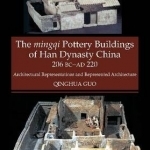Mingqi Pottery Buildings of Han Dynasty China 206 BC AD 220: Architectural Representations & Represented Architecture
BookThis item doesn’t have any media yet
2016 | History & Politics
An enormous number of burial objects have been unearthed from ancient tombs in archaeological excavations in China. These mingqi were made in all kinds of materials and in a broad range of forms, techniques and craftsmanship. In this book Quinghua Guo examines a particular type of mingqi -- pottery building. The striking realism of the pottery buildings suggests that they were modelled after actual buildings. They bring to life courtyard houses, manors, towers, granaries and pigsty-privies, as well as cooking ranges and well pavilions. These pottery buildings, previously little known, preserve knowledge of antiquity and demonstrate the architectural quality and structural variety of the period. The author identifies the typology of the pottery buildings they signify in terms of ontology and semiology, in order to provide a conceptual map for classification, and identifies building systems reflected by the mingqi to detect architectonic systems of the Han dynasty. Key features of this volume include: Cross-disciplinary research -- architectural study interlocking with archaeological study; architectural study interlocking with graphic study.
The Han pottery buildings are important architectural models from the ancient world, and are contrasted with wooden houses of Middle-Kingdom Egypt and brick buildings of the Minor civilisation, Crete, allowing cross-cultural comparisons.
Related Items:
| Published by | Sussex Academic Press |
| Edition | Unknown |
| ISBN | 9781845197797 |
| Language | N/A |
Images And Data Courtesy Of: Sussex Academic Press.
This content (including text, images, videos and other media) is published and used in accordance
with Fair Use.
